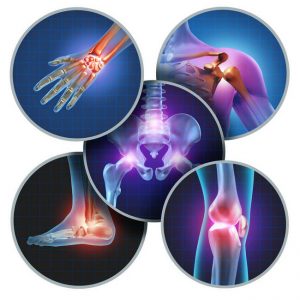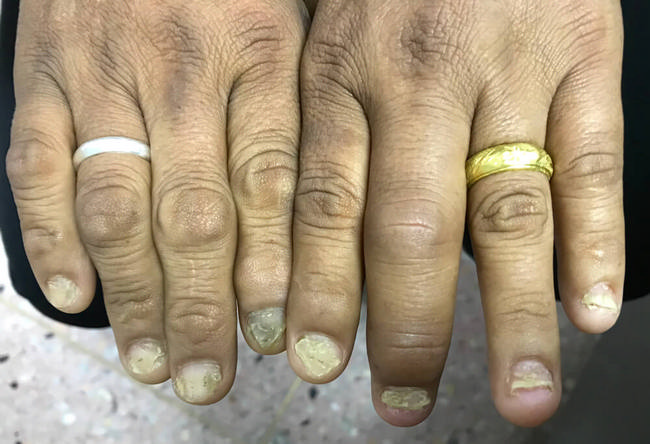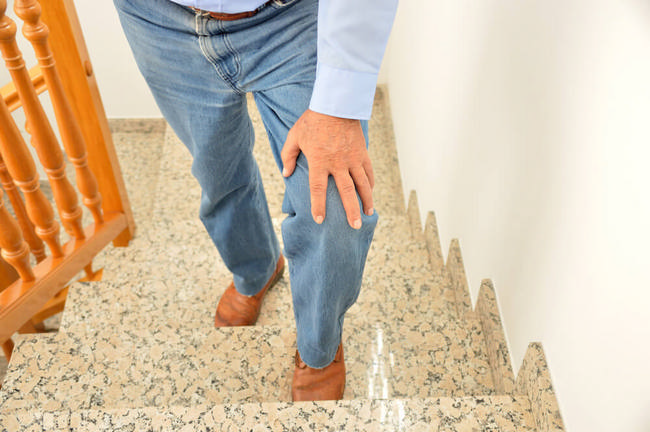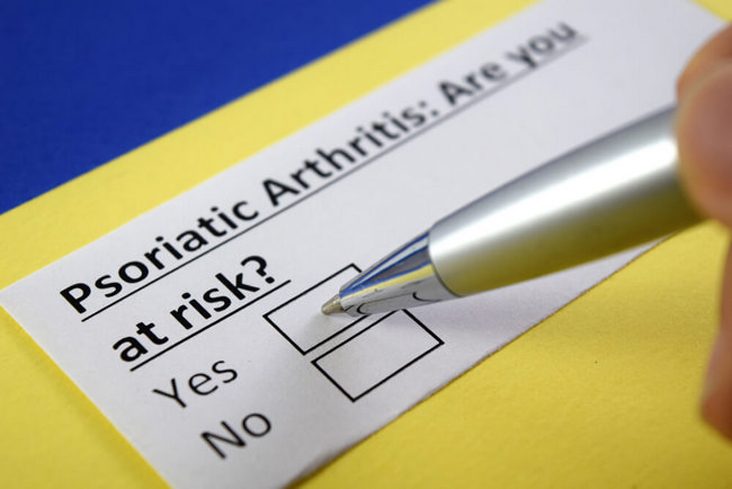Many psoriasis patients and their attending physicians are unaware that they have psoriatic arthritis. Find out if you should get an early screening on Not Alone With Psoriasis, a blog by Novartis — featuring dermatologist Dr Khor Yek Huan.
What Is Psoriatic Arthritis?
According to the Malaysian Psoriasis Registry, 14% of adult psoriasis patients have psoriatic arthritis.1 Unfortunately, a large proportion of psoriasis patients and their attending physicians are unaware that they have the disease.
Psoriasis is an auto-immune disease that isn’t just skin-deep; it can cause inflammation throughout the whole body, including joints2.
Psoriatic arthritis is a painful, disabling condition that affects the joints, tendons, and bones3. Unlike osteoarthritis, which typically affects older patients, psoriatic arthritis can present itself from the ages of 35 to 454.
Like psoriasis, there is no cure for psoriatic arthritis. Early screening and diagnosis is important to treat symptoms and prevent long-term damage to joints. Without treatment, psoriatic arthritis may be disabling and result in deformities.

How Do You Know If You Have Psoriatic Arthritis?
Psoriatic arthritis is often missed because it takes about 12 years to develop into joint issues5. Psoriatic skin lesions usually occur before the joint disease in majority of patients. (Joint pain may precede skin lesions in other patients.) Speak to your doctor at the earliest opportunity in case you do have psoriasis and may have developed psoriatic arthritis without realizing it.
There is little connection between the psoriatic plaque severity (severe skin lesions) and psoriatic arthritis severity (joints with arthritis).
Everyone experiences different symptoms on a case-by-case basis; it is estimated that 25% of patients with psoriatic arthritis suffer neck or back stiffness and pain6.
Check for these symptoms of psoriatic arthritis7,8:
- Daily joint pain lasting longer than 6 weeks with evidence of current psoriasis, a personal history of psoriasis, or a family history of psoriasis
- Unexplained fatigue with difficulty moving around
- Early morning joint stiffness for more than 30 minutes
- Inflammatory joint pain that is more acute during prolonged rest and less acute in the evening after joint movements
- Dactylitis: swollen fingers and toes that look like sausages
- Nail changes: discoloration, nail pitting or damaged nail resembling fungal infection
- Uveitis: pink eyes

Which joints are commonly affected by psoriatic arthritis? Is there any pattern of joint involvement?
Types of psoriatic arthritis are usually defined by the location and number of joints affected. Commonly reported patterns are9:
- Asymmetric oligoarthritis: less than 5 joints are usually affected. The arthritis may affect one joint at one side of the body but not its opposing counterpart. This is the most common pattern reported in Malaysia10.
- Symmetric polyarthritis: multiple joints (more than 5) are usually involved. Commonly occurs at smaller joints on both hands and feet resembling rheumatoid arthritis.
- Distal interphalangeal arthritis: arthritis typically occurs at fingers or toe joints that are closest to the nail.
- Spondyloarthritis: arthritis that affects the spine. Patients usually begin experiencing unexplained lower back pain which becomes progressively more acute over time. Back and neck stiffness will follow if left untreated.
- Arthritis mutilans: the most devastating kind of psoriatic arthritis. Joints are so severely damaged that they can slip into each other just like the portions of a telescope. Luckily, this type of psoriatic arthritis is not common.

Self-Diagnosis vs Medical Evaluation
You can refer to a few screening tools such as the Psoriasis Epidemiology Screening Tool (PEST),
Toronto Psoriatic Arthritis Screen (ToPAS) and Psoriatic Arthritis Screening and Evaluation Tool (PASE) to assess yourself for early detection of psoriatic arthritis. However, these do not test specifically for the disease and they shall not replace a physician’s proper evaluation.
Screening and Frequency
As mentioned earlier, it is very important to detect and treat Psoriatic Arthritis as early as possible. In most circumstances, your attending physician will routinely screen for psoriatic arthritis every three to six months or during each routine skin follow-up. There is no singular test that confirms the disease. Your physician may perform a combination of physical examination, blood tests, MRI’s and X-rays of the joints, then combine their results with your clinical history to ascertain your diagnosis.

Daily Life with Psoriatic Arthritis
If you have psoriatic arthritis, your everyday quality of life may deteriorate. First, because inflammation of your joints restricts physical movements, so daily tasks like climbing stairs, getting in and out of bathtubs, getting dressed, working, and exercising may be extraordinarily difficult. Secondly, patients report feeling embarrassed, helpless, and depressed due to their condition. They often endure low self-esteem and avoid socialising.11

Treatment for Psoriatic Arthritis
Choice of treatment varies according to disease severity, type of arthritis and availability of the medications.
Mild arthritis may be resolved with Nonsteroidal Anti-Inflammatory Drugs (NSAID’s) — oral steroid or steroid injection into the diseased joints is occasionally used for temporary pain control. Moderate to severe arthritis that involve the spine may require disease modifying drugs (DMARDs) and/or biologics injection.
Methotrexate is the first line of DMARD’s and it is effective in reducing skin lesions and joint symptoms. Other commonly used DMARD’s are Leflunomide, sulfasalazine and cyclosporin A.
Biologics are genetically-engineered proteins derived from human genes and they act by inhibiting specific components of the immune system that cause the inflammation in psoriatic arthritis. Given through subcutaneous injection or intravenous infusion, biologics such as inhibitors of tumor necrosis factor-alpha (TNF-alpha), interleukin (IL)-17, IL-12 and IL-23 are effective in reducing both psoriatic arthritis and psoriatic skin lesions.
Both DMARDs and biologics treatment may result in side effects. Proper counselling and discussion are needed before treatment.
These pharmacological treatments can be supplemented with physiotherapy, occupational therapy, lifestyle modifications — such as moderate exercise, stress-reduction techniques, and healthy diet — for maximum results.
As mentioned above, there is no cure for psoriatic arthritis. Like many other autoimmune diseases, symptoms tend to wax and wane, alternating between flare-up’s and periods of remission.
However, if you know what triggers your arthritis (such as stress or infection), you may be able to manage it with rest and lifestyle changes. Regular follow-up’s and good interactions with your treating physician is key to successful treatment.

Do inform your doctor if you experience severe and prolonged flare-up’s without a known trigger – this means you may need to switch your medication.
Visit our Facebook page to find out more information about psoriasis.
Read stories like this and more about psoriasis on our MyPsoriasis blog.
Visit #Ask4Clear and find the best dermatologist near you today!
If you enjoyed this article, read Biologic Treatment For Psoriasis: 4 Things You Need To Know
References
- 1 Annual report of the Malaysian Psoriasis Registry 2007-2014
- 2 https://www.psoriasis.org/about-psoriasis
- 3, 4, 5 Which Psoriasis Patients Develop Psoriatic Arthritis? Kristine Busse and Wilson Liao. Psoriasis Forum. 2010 Winter; 16(4): 17–25.
- 6 What Are The Symptoms Of Psoriatic Arthritis? Arthritis Research UK
- 7 Salliot C, Dernis E, Lavie F, et al. (2009). Diagnosis of peripheral psoriatic arthritis: Recommendations for clinical practice based on data from the literature and experts opinion. Joint Bone Spine. 76:532-539.
- 8 Taylor W, Gladman D, Helliwell P, et al. (2006). CASPAR Study Group. Classification criteria for psoriatic arthritis: development of new criteria from a large international study. Arthritis Rheum. 54(8):2665-2673
- 9 Moll JM and Wright V (1973). Psoriatic arthritis. Semin Arthritis Rheum. 3(1):55-78.
- 10 Annual report of the Malaysian Psoriasis Registry 2007-2014
- 11 https://www.ncbi.nlm.nih.gov/pmc/articles/PMC4206220/

 Tue-Fri 10:00-20:00
Tue-Fri 10:00-20:00
 +604-638 3393 / +6010-399 7713
+604-638 3393 / +6010-399 7713
 B-2-1, Bay Avenue, Bayan Lepas
B-2-1, Bay Avenue, Bayan Lepas
